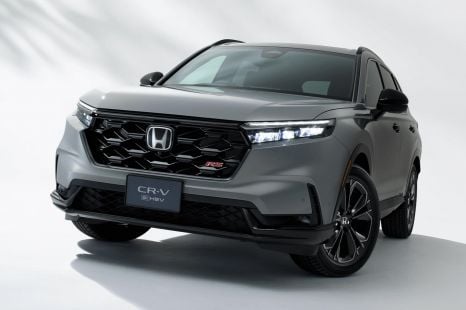

James Wong
Honda Australia: CR-V should be number one in segment, Japan previews incoming updates
15 Hours Ago
It shares a platform with the A-, GLA- and B-Class, but how well does it work with a third row thrown into the rear?
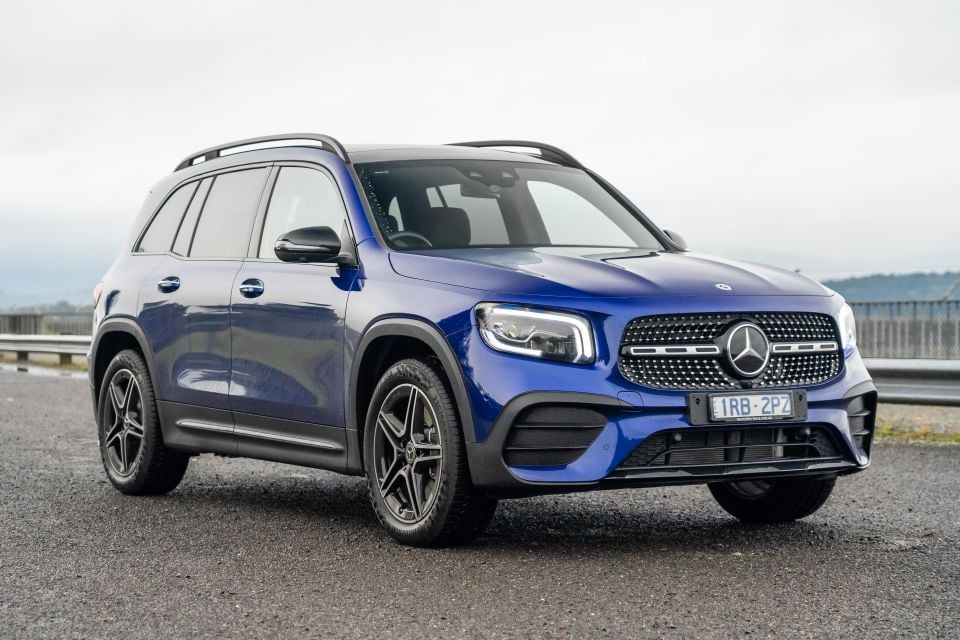
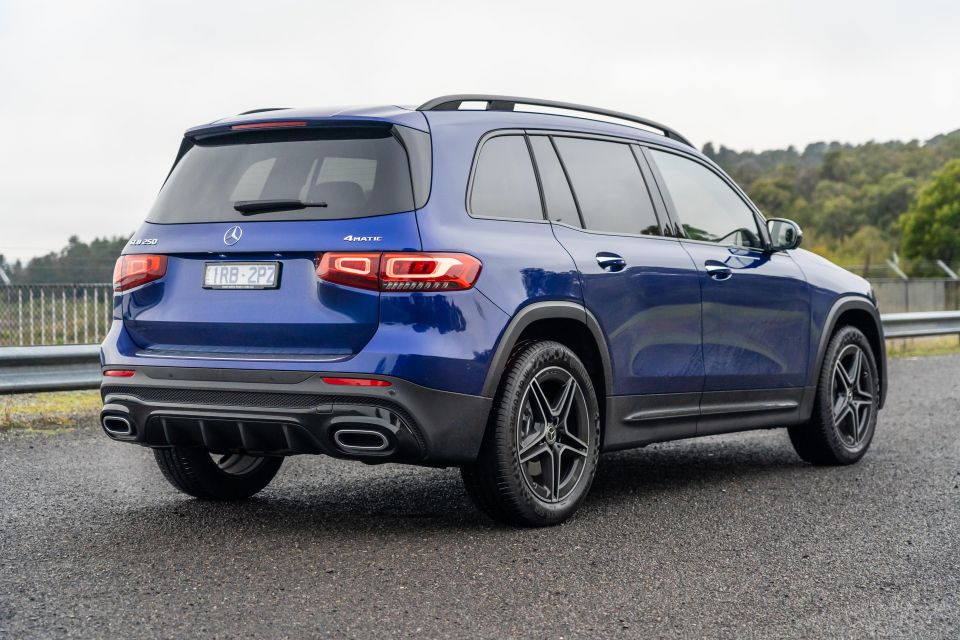

Founder
New from
$59,900
excl. on-roads

Founder
New from
$59,900
excl. on-roads


Founder
New from
$59,900
excl. on-roads

Founder
New from
$59,900
excl. on-roads
Quickly see how this car stacks up against its competition. Select any benchmark to see more details.
Where expert car reviews meet expert car buying – CarExpert gives you trusted advice, personalised service and real savings on your next new car.
SUVs continue to dominate the new car market, with luxury brands now cashing in on the craze by developing models to slot into any segment you could possible imagine.
Until now, Mercedes-Benz hasn’t really has a car in Australia offering true 5+2 capability – that’s five seats, plus two occasional use seats – that didn’t force buyers to spend big on a GLE or a GLS.
Meet the solution. The new Mercedes-Benz GLB sits on the MFA2 platform, shared with the A-, B-, CLA- and GLA-Class vehicles.
It measures 4634mm long, 1658mm tall and 1834mm wide, which makes it 20mm shorter and 14mm taller than the GLC – which is funny because the GLC isn’t available with seven seats.
With a new range that kicks off with the entry-level GLB 200 and includes a warmed up AMG version, is the GLB the ultimate seven-seat luxury SUV for families on an entry-level luxury budget?
The Mexican-built GLB range kicks off with the GLB200, which is priced from $59,900 before on-road costs.
Next up is the car tested here, the GLB250, which costs $73,900 before on-roads. Finally there’s the Mercedes-AMG GLB35, which costs $88,900 before on-roads.
There are eight colours to choose from, including one unique to the GLB for the moment called Galaxy Blue. All colours aside from solid white and black are an additional $1490.


We’ve gone through pricing in detail with our 2020 Mercedes-Benz GLB pricing and specifications story.
In terms of options, you can pick from the Driver Assistance Package ($1990, semi-autonomous driving with lane-change assistant), Vision Package ($1190, 360-degree camera, matrix LED headlights) and Communications Package ($2490, head-up display, 12-speaker premium sound system).
There’s also the Exclusive Package ($2990, leather seats with cooling, open-pore wood trim), AMG Exclusive Package ($2490, like the Exclusive Package with more AMG), Night Package ($990, privacy glass and black highlights) and the Sports Package ($1990, AMG wheels, night package, AMG highlights).
Buy your new car without the stress. It's fast, simple and completely free.

Great service from Travis and team, second time I have used this business would not hesitate to recommend them to anyone
Craig C.
Purchased a Ford Ranger in Sunshine Coast, QLD
CarExpert helped Craig save thousands on his Ford Ranger, now let us save you on your next new car.
Find a dealMercedes-Benz has equipped the GLB range and specifically the GLB250 with a high level of standard equipment.
Outside it features 19-inch alloy wheels, adaptive LED headlights, roof rails, a panoramic sunroof, adaptive dampers, front and rear parking sensors, automatic wipers, and automatic headlights.

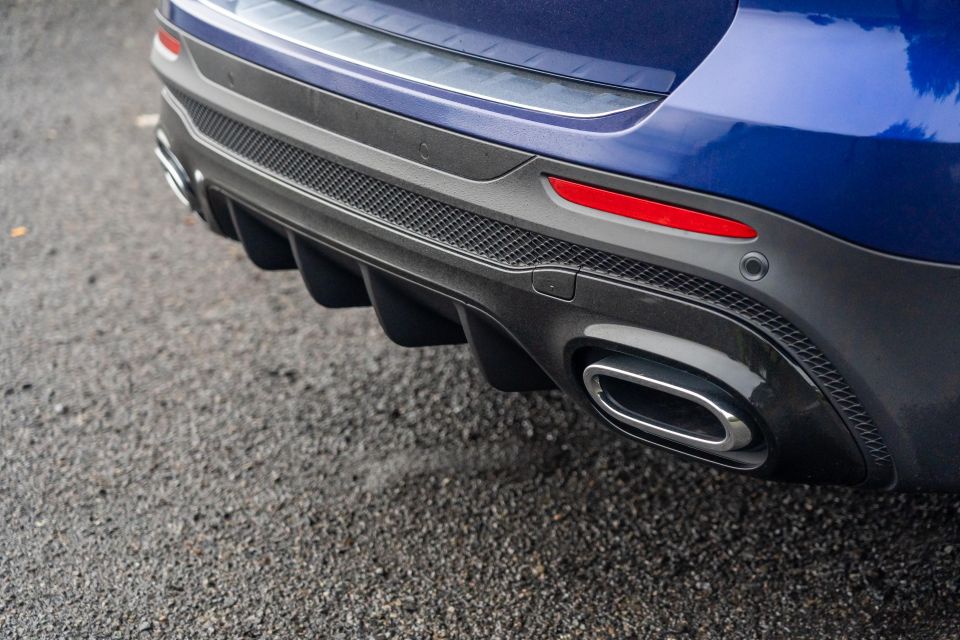
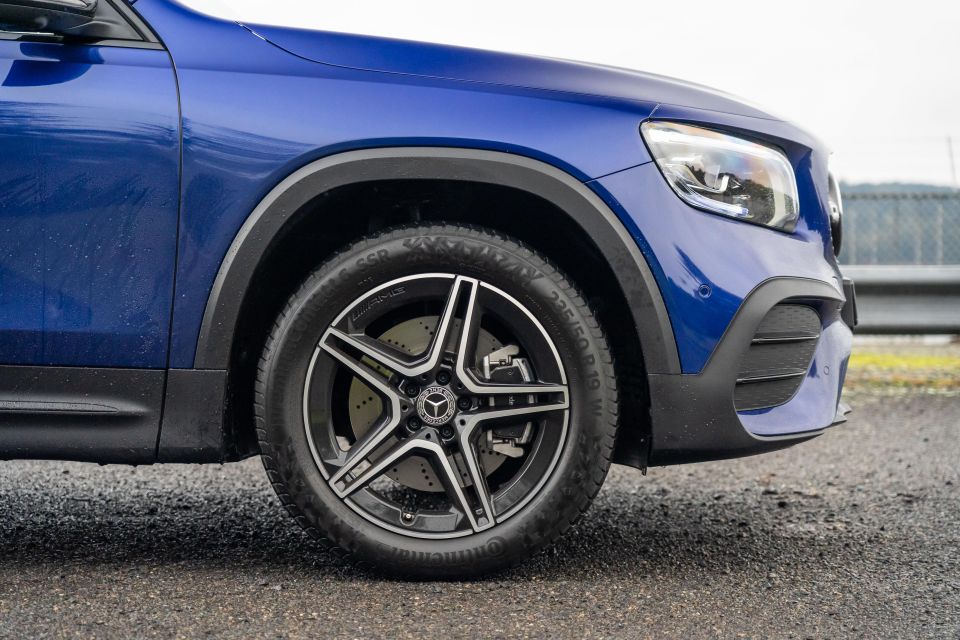
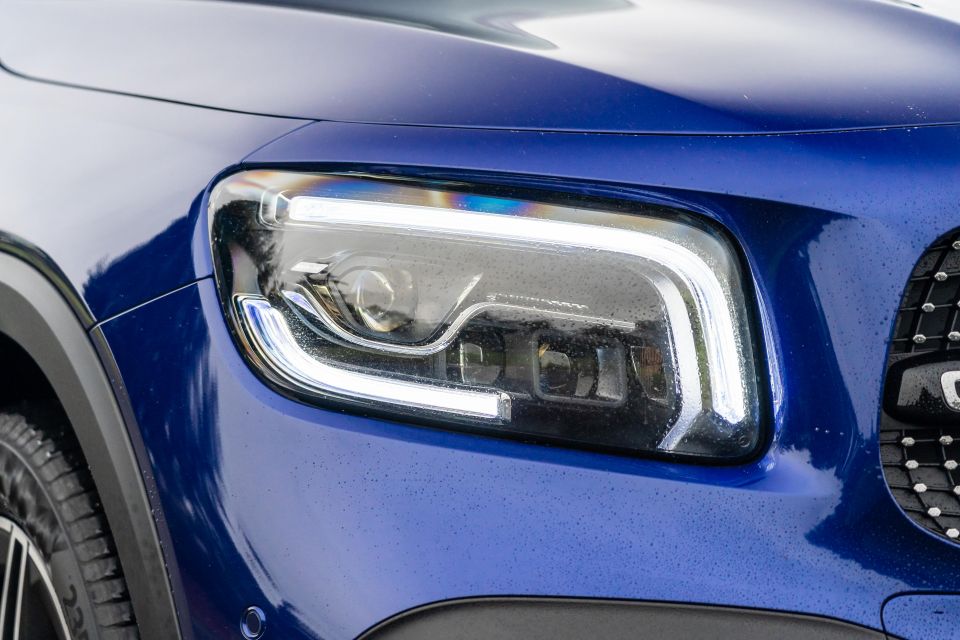
Inside you’ll find Mercedes-Benz’s MBUX infotainment system, which consists of two 10.25-inch screens, fake leather seats, electric seat adjustment with memory, seat heating for the first row, radar cruise control, LED ambient lighting, dual-zone climate control, an auto-dimming rear vision mirror, wireless phone charging, and a nine-speaker sound system with Apple CarPlay and Android Auto.
In terms of options, we’d recommend checking out the Sports Package and Communications Package. The head-up display is sorely missed, and can’t be added without ticking one of the options packages.
The Mercedes-Benz GLB was crash tested by Euro NCAP in 2019 and scored five stars, with its rating matched by ANCAP at the same time.
The GLB picked up a 92 per cent adult occupant rating, an 88 per cent child occupant rating, a 78 per cent vulnerable road user safety rating, and a 76 per cent safety assist score.
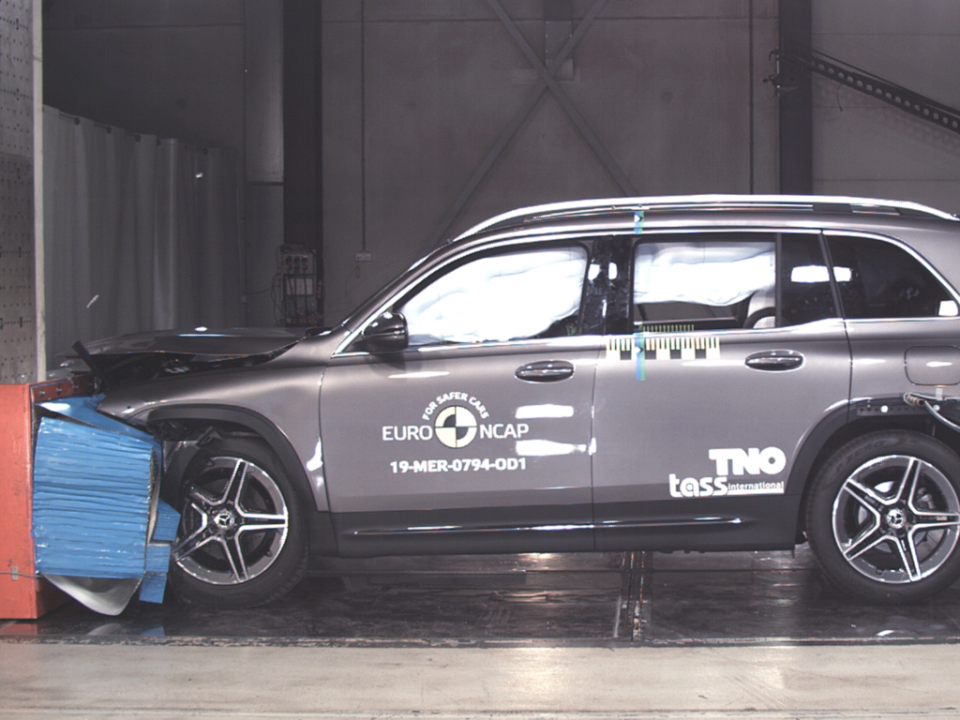
Read more details about the crash test and the results on the ANCAP website.
Standard safety features include low- and high-speed autonomous emergency braking with vulnerable road user detection, lane-departure warning and lane-keeping assist, blind-spot monitoring, rear cross-traffic alert, and curtain airbags covering all three rows of occupants.
We love it when a car makes a big first impression. The GLB does that when you open the door, immediately presenting you with a nicely laid-out interior with two 10.25-inch screens highlighting the level of technology strewn throughout the cabin.
The two screens feature MBUX, which is the latest Mercedes-Benz infotainment system. It’s controlled using steering wheel controls, as a touchscreen, or using a touchpad on the centre tunnel.
It’s fast, looks good, and is easy to use. It’s not quite as sharp as BMW iDrive, but it’s a huge step forward from COMAND, which was the outgoing Mercedes-Benz infotainment system.
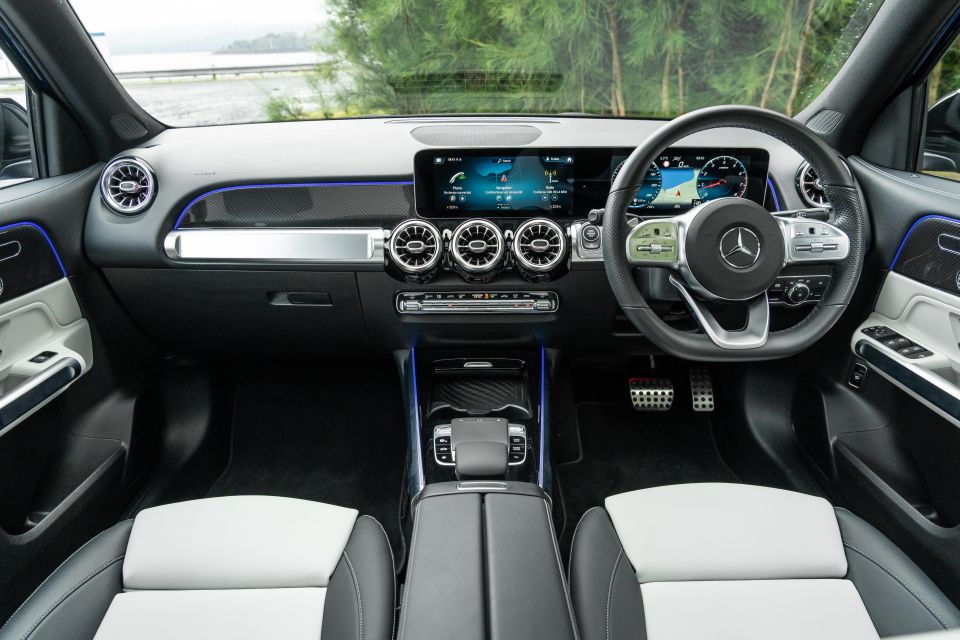
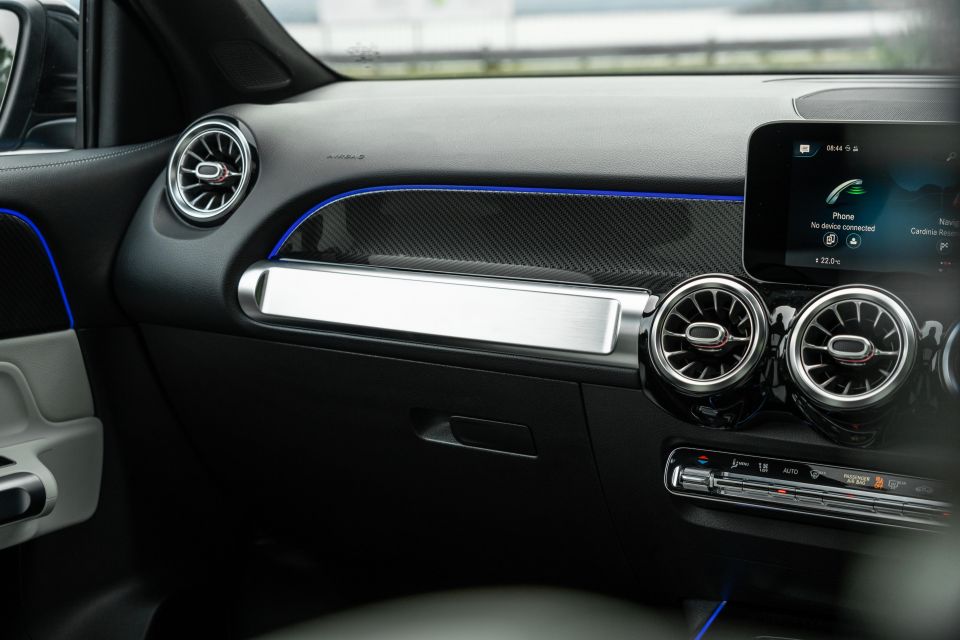
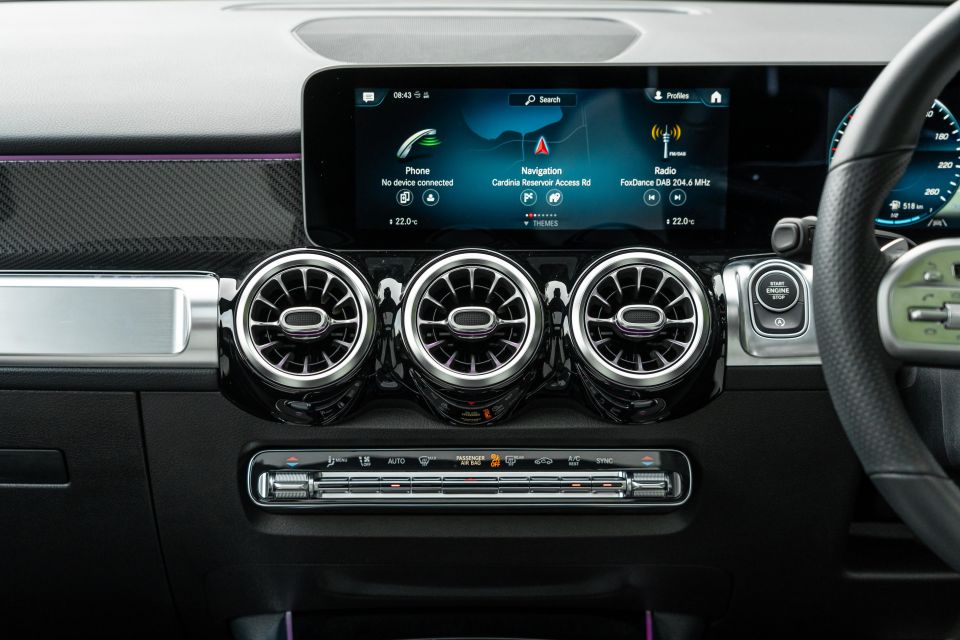
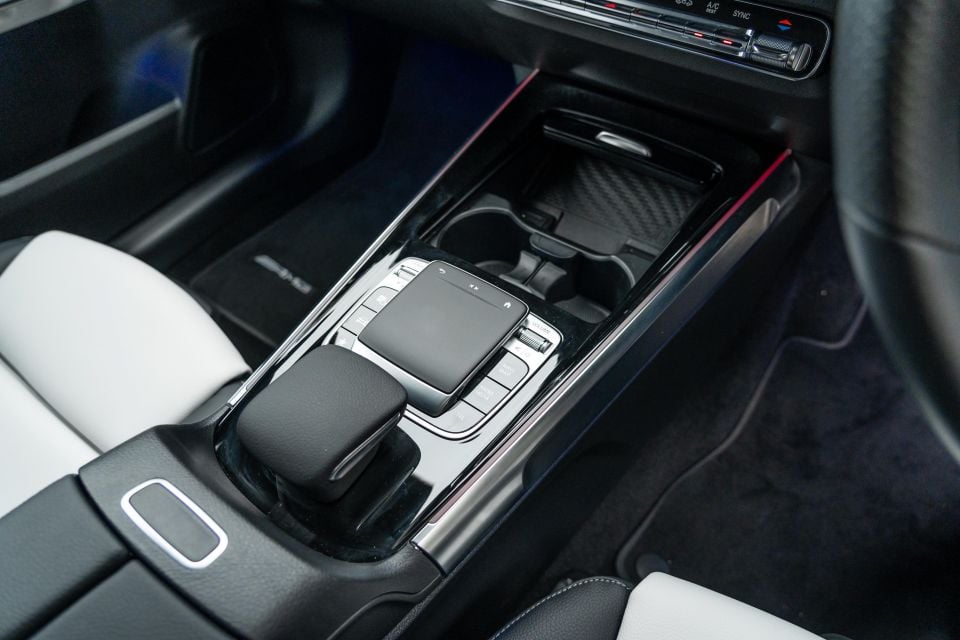
While there’s wireless phone charging, both Apple CarPlay and Android Auto require a wired connection through USB-C. Speaking of which, there are seven USB-C ports throughout the cabin with three up front, two in the second row, and two in the third row.
The voice recognition system built into the infotainment is excellent and capable of taking commands to call phone contacts, accept full navigation addresses, and interacting with the Mercedes-Benz connectivity service Mercedes Me.
In addition to the car’s infotainment system, the voice recognition can send commands directly through to your phone’s cloud-based voice recognition system with a long hold.
A second display in front of the driver is controlled by the steering wheel and offers a number of different configurations, with endless choices for the information on show and its layout. It’s impressive how much customisation there is for these displays.
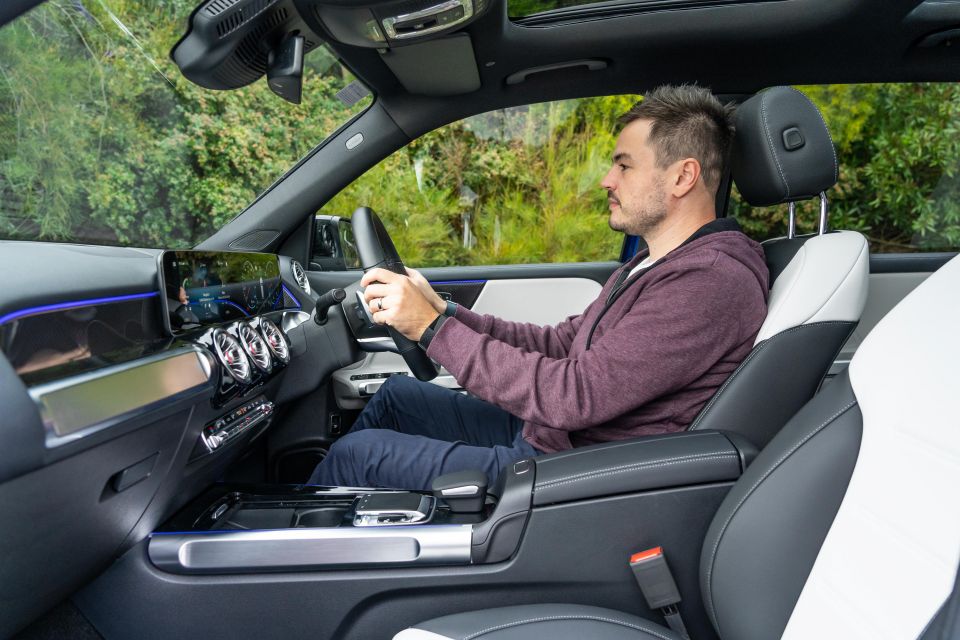
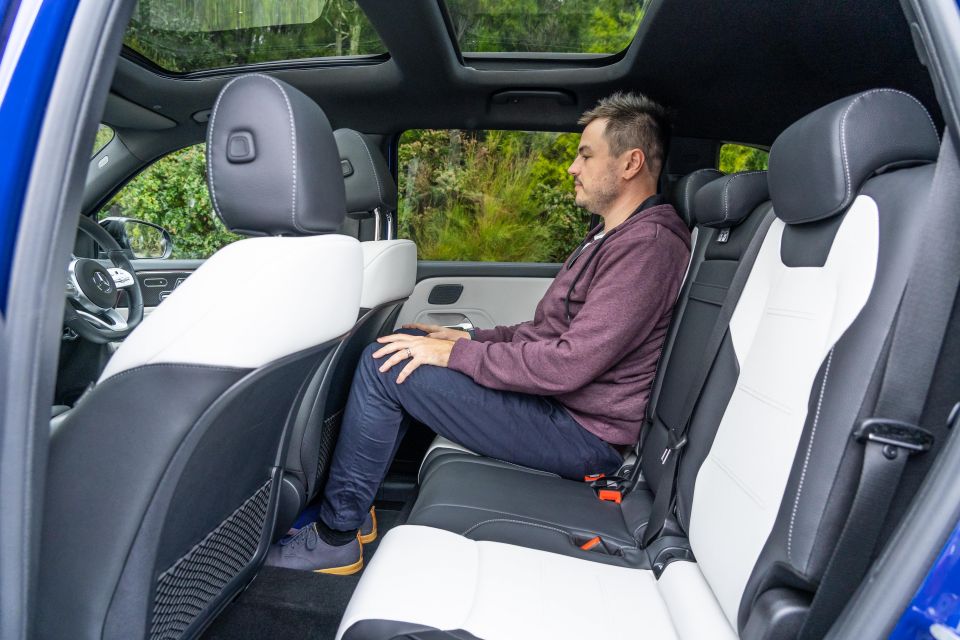
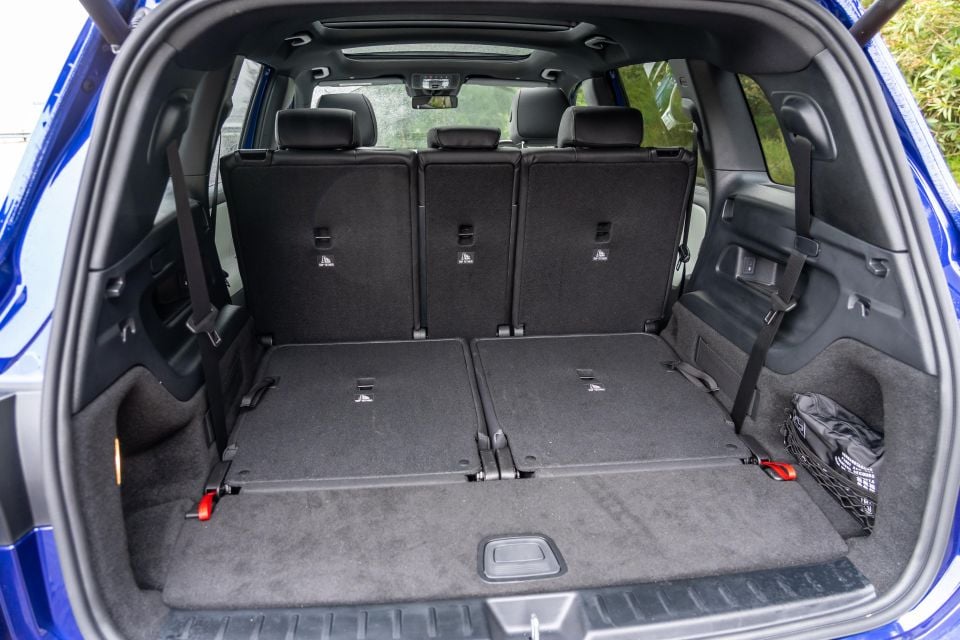
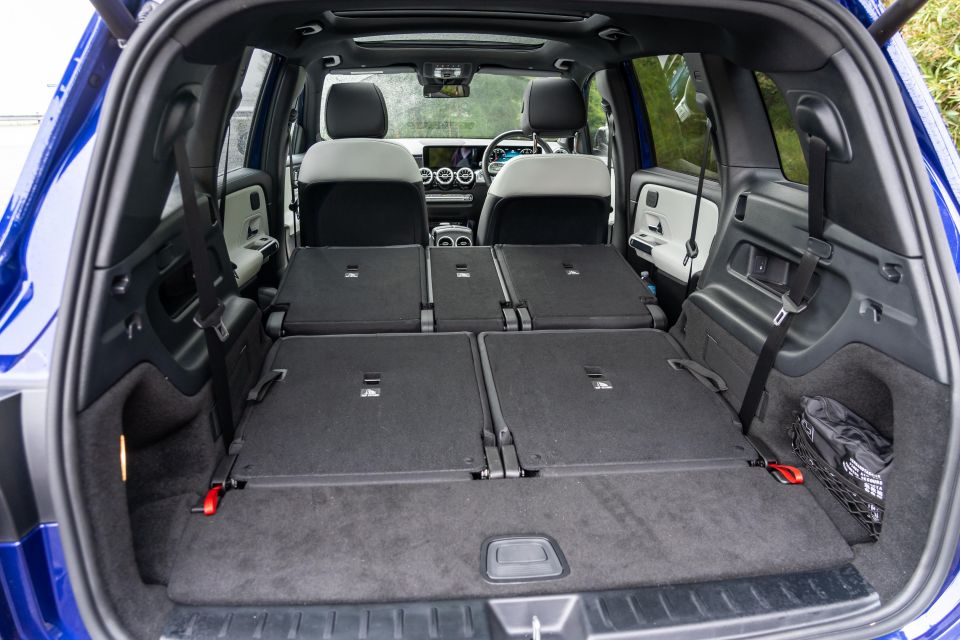
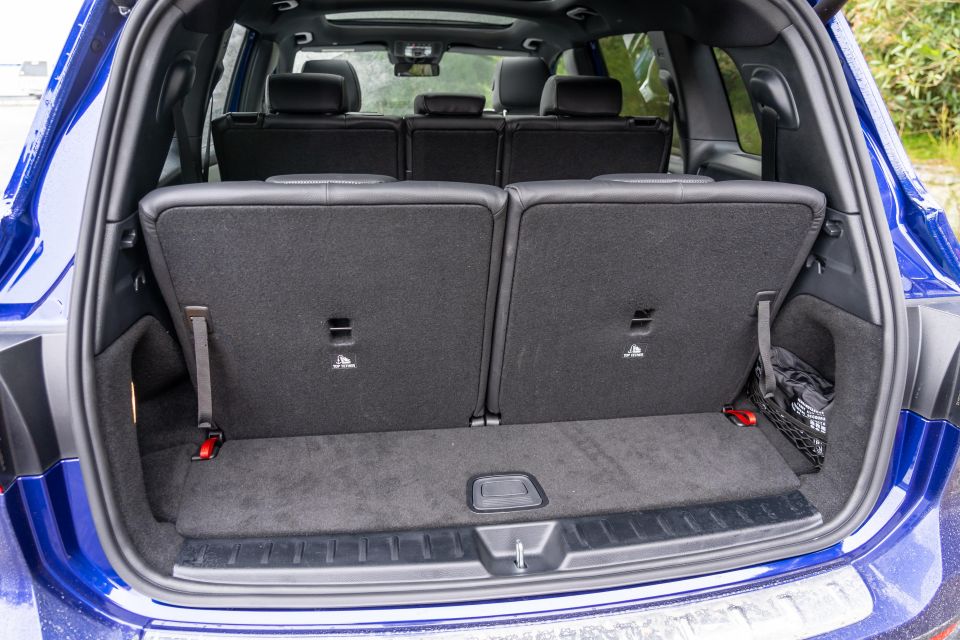
Up front there’s plenty of storage with a generous centre console, door bins, and a decent-sized glove box.
In the second row there’s enough room for an adult to sit behind a first-row seat pushed almost all the way back.
The only hitch is a slight lack of toe room, but it’s not the end of the world. The second row slides and reclines, and includes two ISOFIX points on the outboard seats, plus three top tether points. You’ll also find rear air vents.
Impressively, the second row doors open almost 90 degrees, which makes loading child seats and kids into the third row much easier.
Speaking of the third row, getting in requires the second row to be folded flat and slid all the way forward. The third row is clearly a space for kids only, with limited toe and knee room for adults.
While in there, the kids have access to two USB-C ports, and are covered by curtain airbags extending all the way to the car’s rear.
With the third row in position, there’s up to 150 litres of storage capacity with a cavity beneath the floor for storage of the triangle, reflective vests and cargo blind.
Drop the third row and space increases to up to 700L (achieved by sliding the second row all the way forward) and finally if you drop the third row, cargo space maxes out at 1680L.
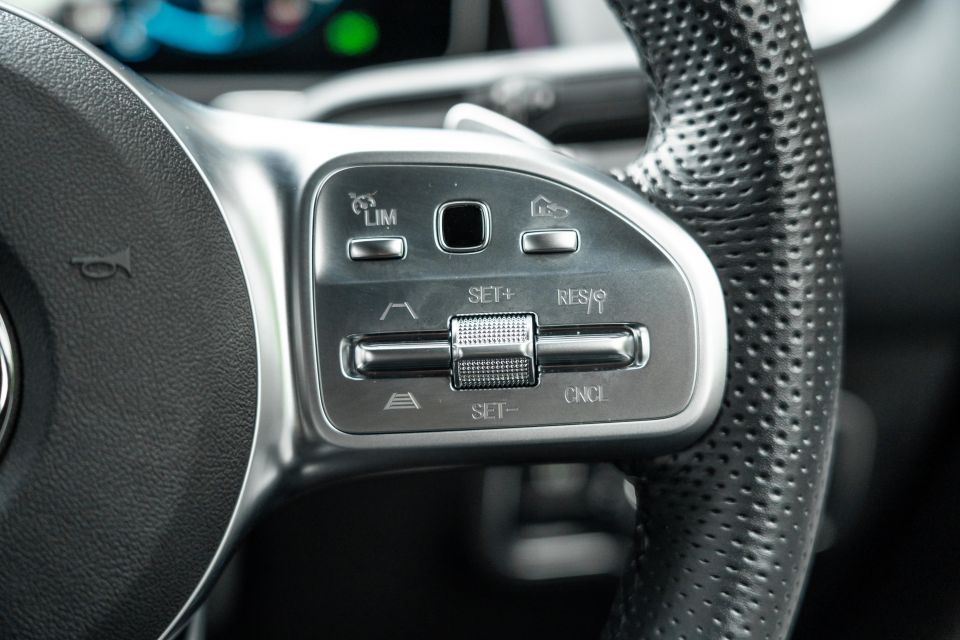
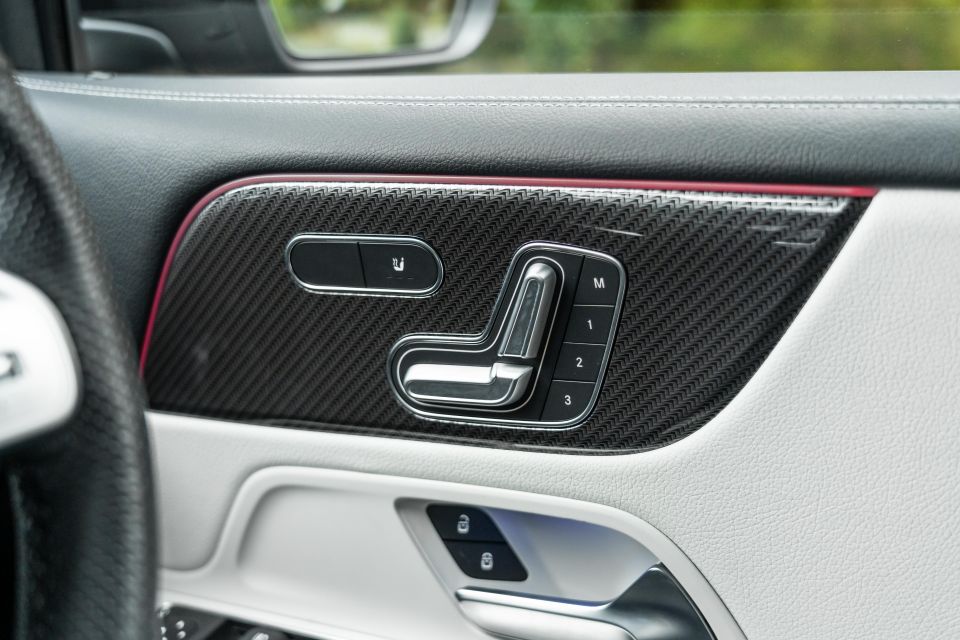
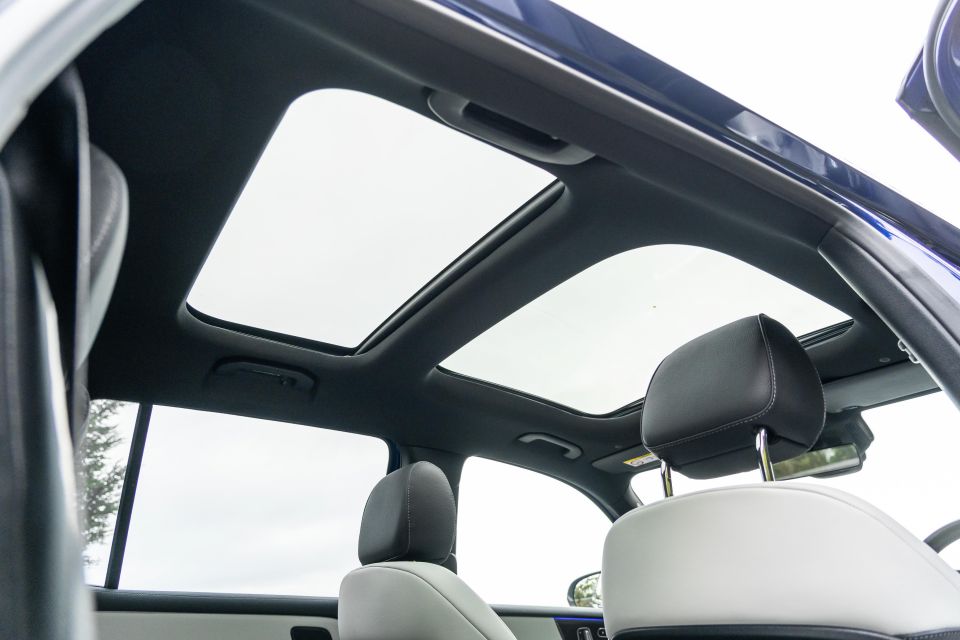
The powered tailgate includes a handsfree opening mode, which is accessed by sliding a foot beneath the car while the key is in proximity. In terms of comfort, the seats offer plenty of support and are made of man-made leather. Real leather seats are part of an option package.
The GLB is taller than the GLC, which is why the cabin feels so airy – even more so with the panoramic sunroof in the GLB250.
Powering the Mercedes-Benz GLB250 is a 2.0-litre turbocharged four-cylinder petrol engine producing 165kW of power and 350Nm of torque.
It’s mated to an eight-speed dual-clutch automatic transmission (first time this has been used outside of Mercedes-AMG models) and consumes 7.7 litres of fuel per 100km. During our time with the car that figure was a little higher, settling on 9.7L/100km.
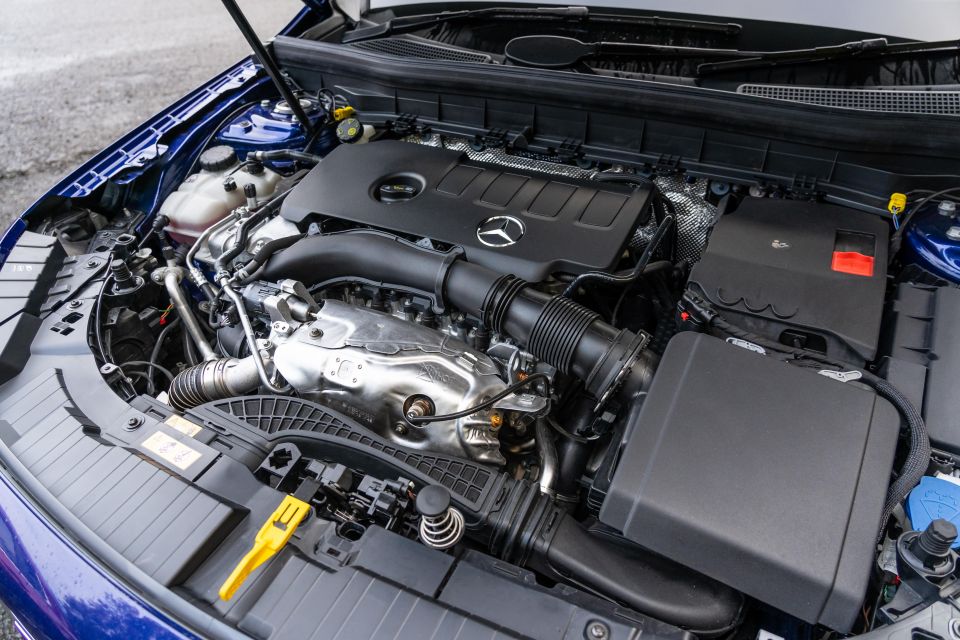
Peak torque comes in at an impressive 1800rpm, while peak power hits at 5500rpm. Keep in mind the GLB250 requires 95RON premium unleaded fuel.
We’re fans of the 2.0-litre turbocharged petrol engine in the new A-Class, but weren’t sure what it would be like in a significantly bigger car. After all, the A-Class weighs 1530kg, compared to 1766kg for GLB250.
Surprisingly it doesn’t feel significantly worse off, despite the extra weight. It takes a little longer to get up to speed if you get stuck into the throttle, but the difference is marginal and not something most buyers will notice.
The new eight-speed dual-clutch transmission is good. It’s relatively fuss free, but you will find occasional points where it can be a little hesitant, especially at low speeds. For the most part though it’s sharp, and responds quickly to demands for torque.
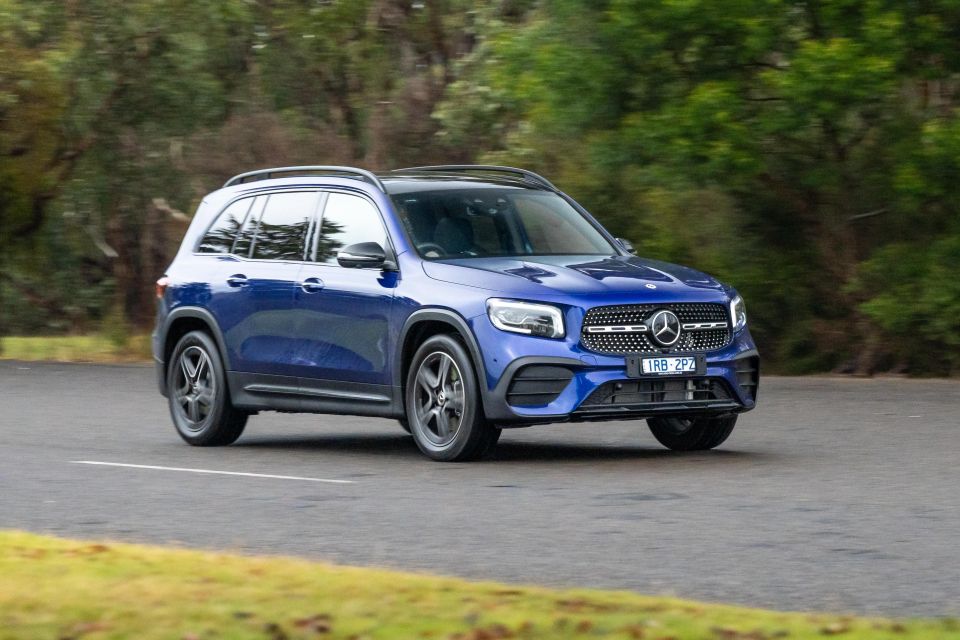
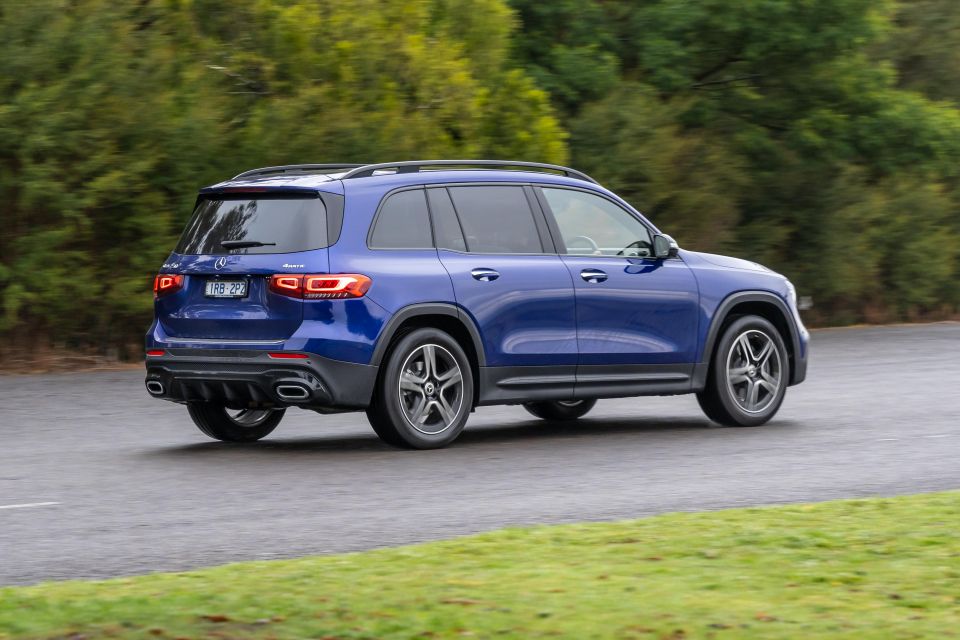
The all-wheel drive system in the GLB250 splits torque front/rear 70/30 in comfort mode, 30/70 in sport mode, and 50/50 in off-road mode. This means when you do slot the car into Sport, more torque is sent to the rear to improve dynamic feel behind the wheel.
An off-road mode limits traction control intervention and effectively creates a centre differential lock with the 50/50 torque split arrangement. It also engages cornering lights permanently to help see obstacles, and shows off-road-relevant dials to the driver.
The engine is plenty punchy and responsive (and sounds pretty good in Sport mode), but what impressed us the most was the ride. Despite rolling on 19-inch alloy wheels, the adaptive damping creates an incredibly cushy and compliant ride.
It’s unfazed by pot holes, corrugations or the rough and tumble of city roads. It’s soft, but not overly soft and when dialled into Sport mode it remains compliant, but firm enough to feel engaging. It’s surprising how well the car rides given its size, and the size of the wheels.
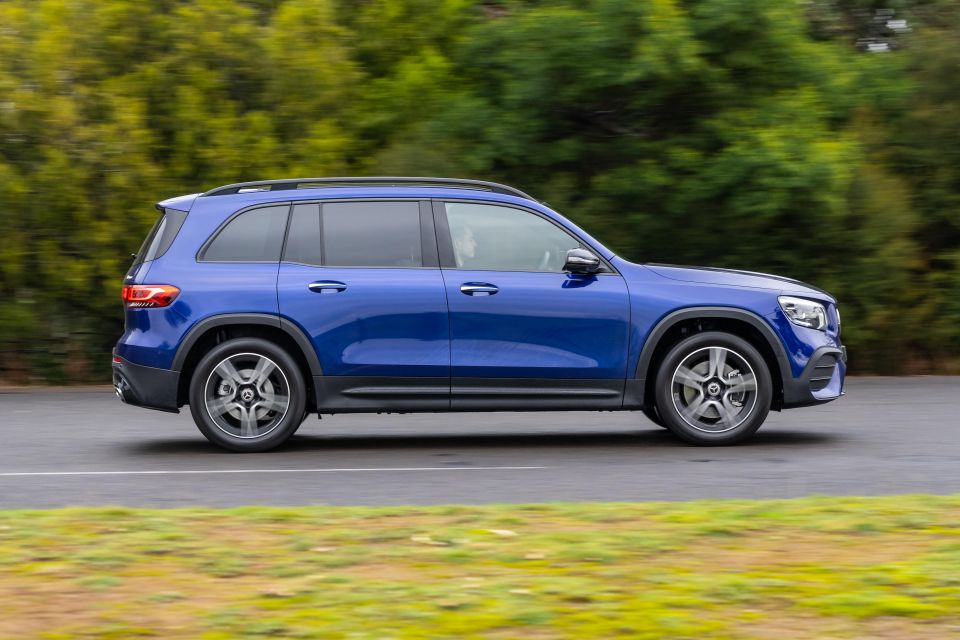
Buyers can option an 18-inch alloy wheel at no cost – something people will often do if they travel to the snow regularly and need to fit chains. They’re easier to come across than chains for 19-inch alloy wheels.
With peak torque available from 1800rpm, the engine has loads of flexibility and is just as happy low in the rev band as it is closer to the top.
It spins freely all the way to redline and delivers a sonorous note that’s engaging and purposeful. 350Nm of torque won’t shove you through the seat and into the second row, but it’s punchy enough to put a smile on your face.
It sits flat through corners and the variable-ratio steering makes it fun to punt through corners. It’s no sports car and you begin to feel the weight as the pace increases, but for the most part it’s sporty enough if you stumble upon a mountain pass.
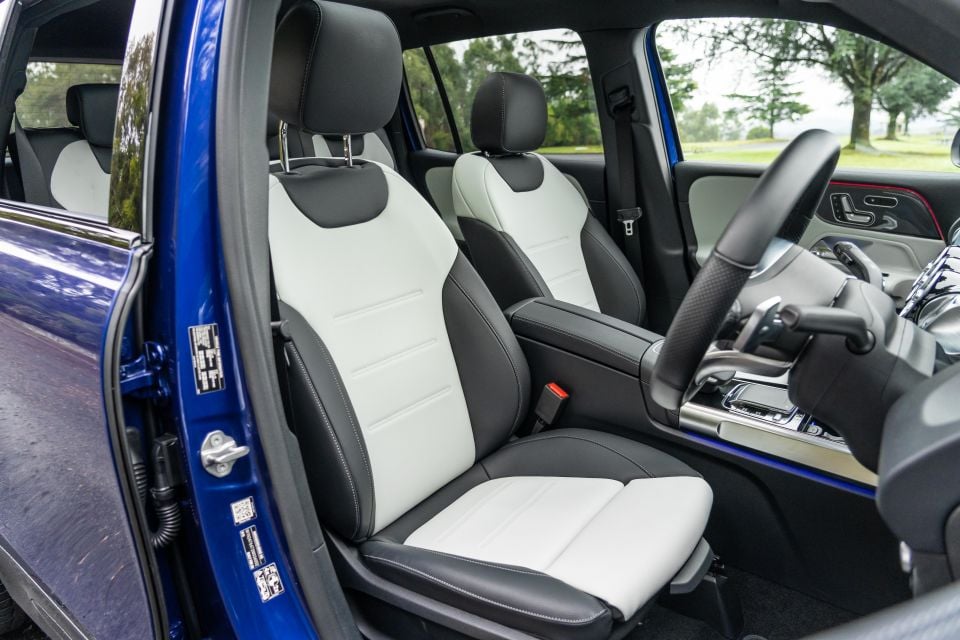
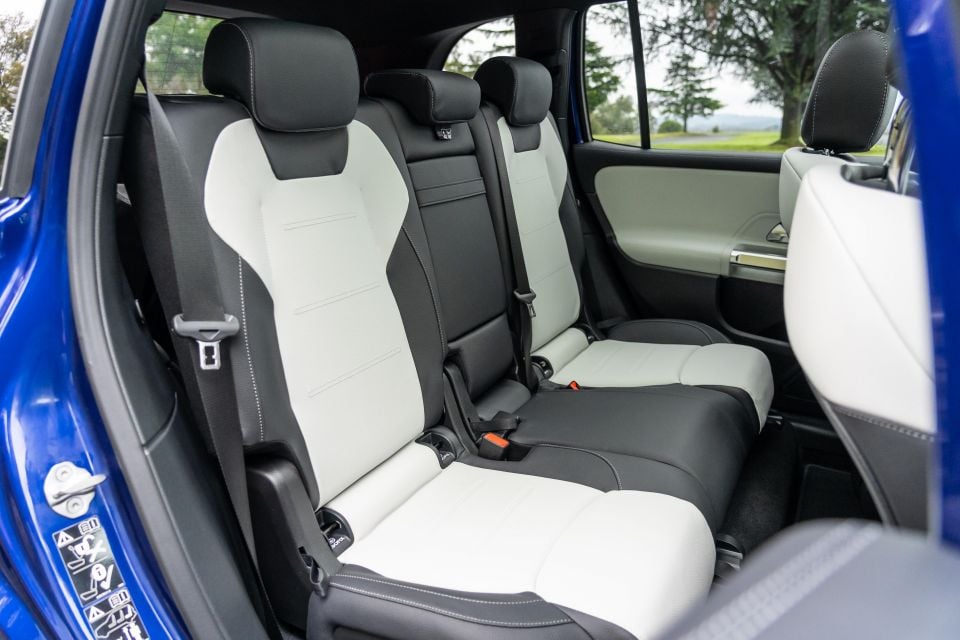
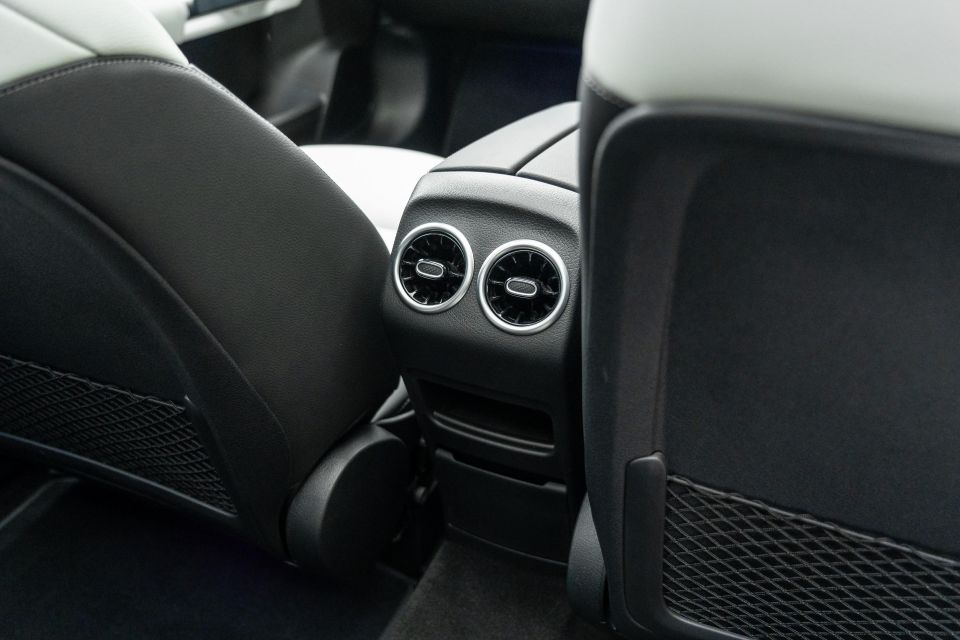
Visibility out the front and sides is great, with blind-spot monitoring built into the wing mirrors, but visibility out the rear is somewhat limited, especially if you have passengers in the third row.
Another thing that surprised us was how quiet it was inside the cabin. There’s not a great deal of road noise, even on coarse chip surfaces.
Mercedes-Benz was the first luxury car brand to move to a five-year, unlimited-warranty with five years of roadside assistance.
While the GLB can be purchased with prepaid capped-price servicing, exact pricing is yet to be confirmed. We do know service intervals are every 12 months or 25,000km, whichever occurs first.

For reference, the GLC costs $2150 to service over a three-year period. The A-Class is priced at $2050 over the same period.
This car really took me by surprise. On the surface it looks just like a bigger A-Class with an extra set of seats crammed in.
But with the way it has been optioned, you don’t need to spend a mountain of money to get a pleasant specification that looks half decent.
There really aren’t many competitors to choose from in this segment, and the added benefit of Mercedes-Benz’s new five-year warranty makes it a compelling purchase.
It feels more premium than a Volkswagen Tiguan Allspace and Land Rover Discovery Sport, and has a resolved ride and handling package that makes it sporty when it needs to be, but comfortable the rest of the time.
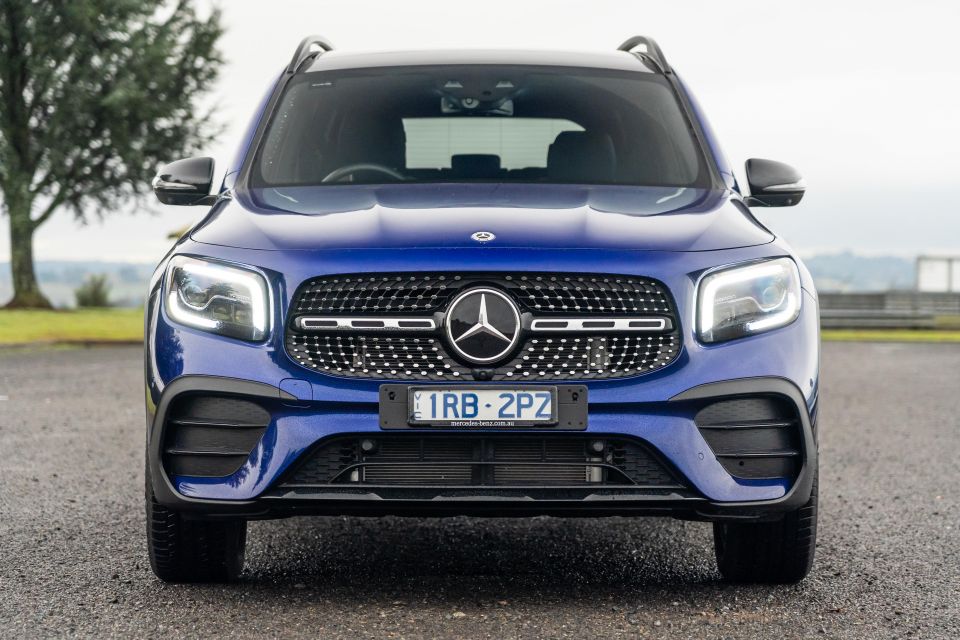
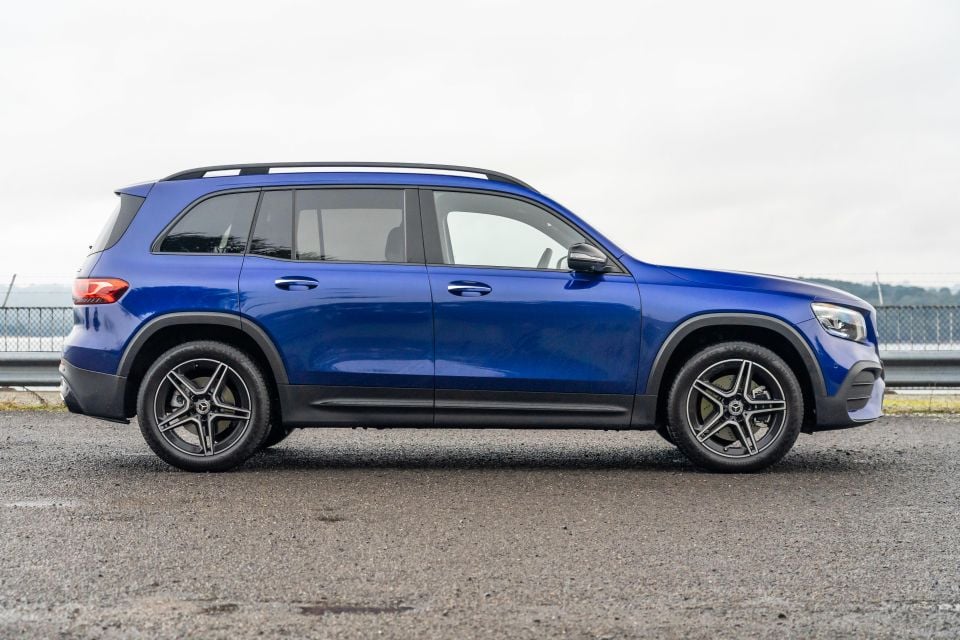
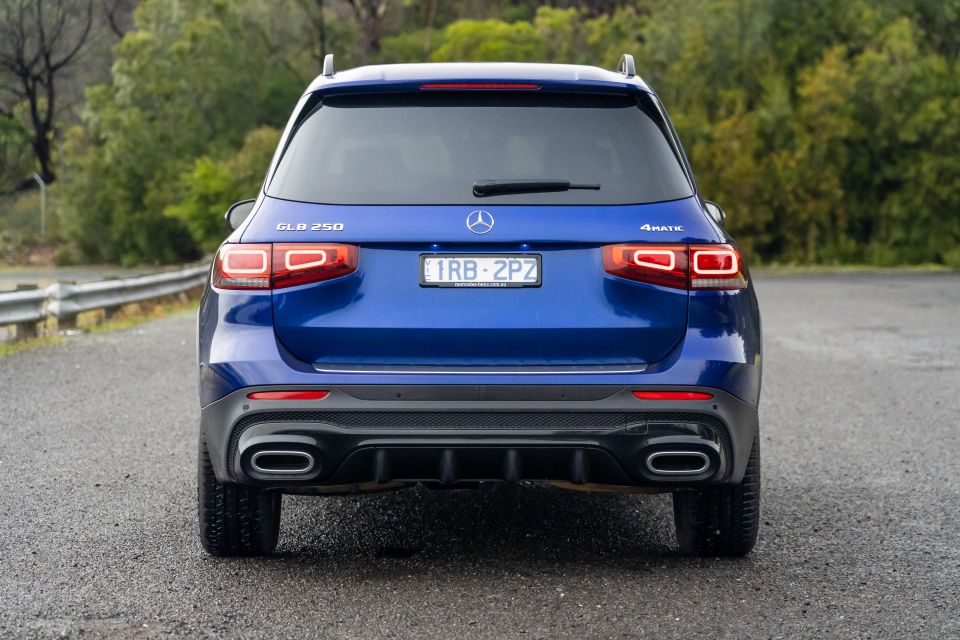
I would have liked to see a head-up display available without bundling an option package – and I’m still not totally in love with the concept of dual-clutch transmissions being put into every remaining car on the planet, but the fuel economy benefits speak for themselves in today’s age of strict emissions.
From the point of view of a family with a couple of small kids, perhaps with more on the way, or maybe with a soccer team to manage, the concept of a five seater with an extra two seats strikes the right chord.
Where expert car reviews meet expert car buying – CarExpert gives you trusted advice, personalised service and real savings on your next new car.
Paul Maric is a CarExpert co-founder and YouTube host, combining engineering expertise with two decades in automotive journalism.


James Wong
15 Hours Ago
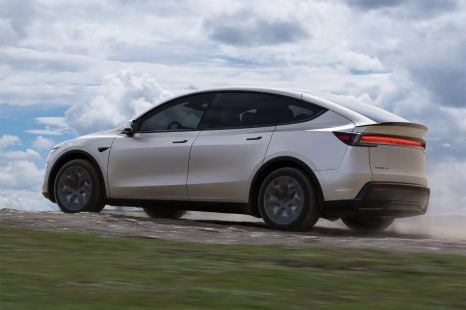

Derek Fung
17 Hours Ago
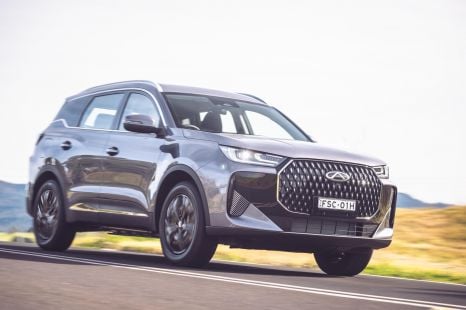

CarExpert.com.au
3 Days Ago


James Wong
3 Days Ago
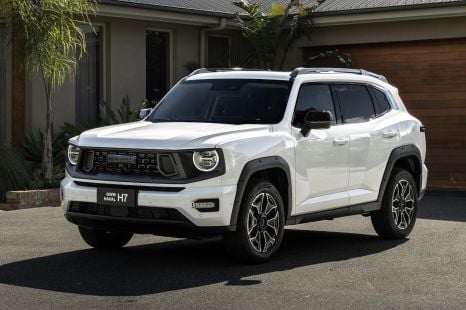

William Stopford
4 Days Ago
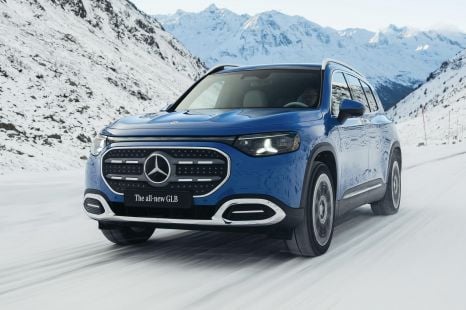

Gautam Sharma
15 Days Ago